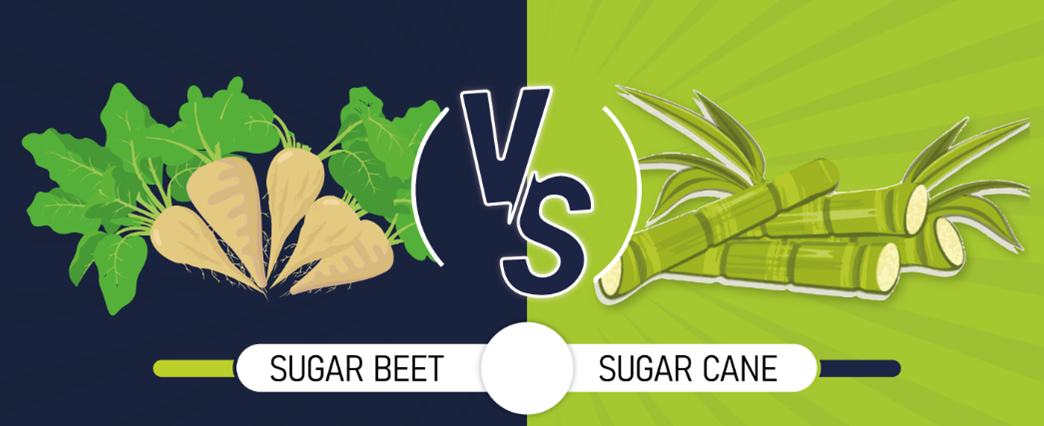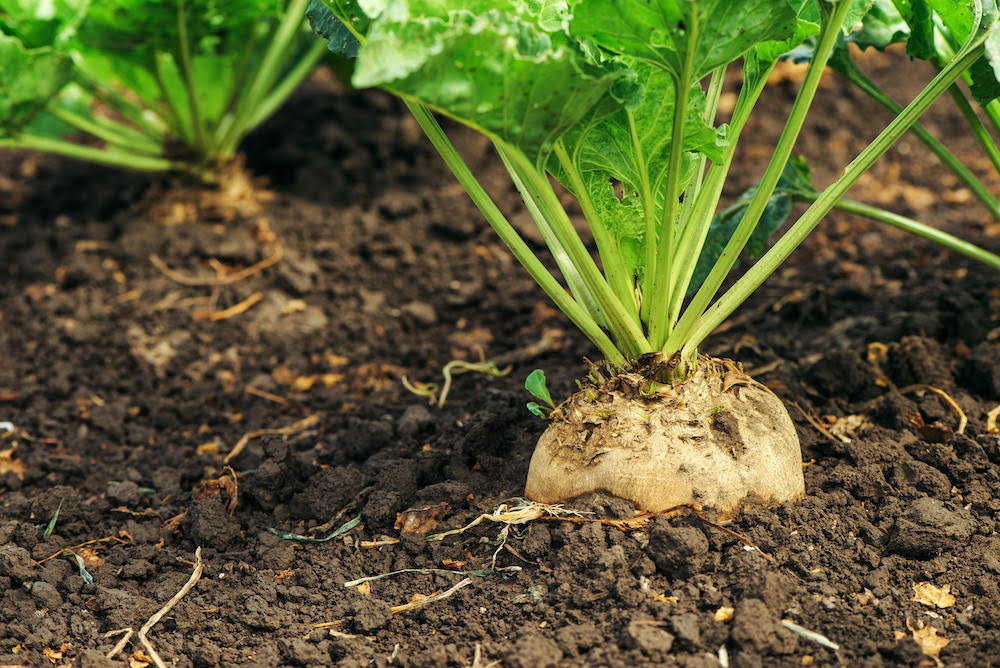Why sugar beet vs sugar cane is a hot topic in today’s sugar industry
The Value of Sugar Beet Vs Sugar Cane: a Closer Consider Their Manufacturing Processes and Applications
The significance of sugar beet and sugar cane prolongs past their duty as resources of sucrose. Each crop includes unique producing procedures that influence their applications across different sectors. While sugar beet supports not simply food manufacturing however also biofuels and fertilizers, sugar cane mostly offers the food sector with important byproducts. Comprehending these distinctions discloses how each crop shapes farming economic situations and sector methods around the world, motivating more expedition right into their unique payments.

Overview of Sugar Beet and Sugar Cane
Sugar beet and sugar cane are two primary sources of sucrose, each with distinct characteristics and cultivation approaches. Sugar beet, an origin veggie, prospers in warm environments - Sugar beet vs sugar cane. It is cultivated largely in the Northern Hemisphere and needs well-drained dirt. The plant typically grows to an elevation of concerning 18 inches, with a white, fleshy origin consisting of regarding 15-20% sucrose. In contrast, sugar cane is a tropical yard that prospers in warm, moist conditions. It can get to heights of up to 12 feet and is composed of tall, jointed stems that shop sucrose concentrations varying from 10-15%. The cultivation of sugar cane is labor-intensive and frequently entails hands-on harvesting. Both crops offer as important farming commodities, offering raw products for sugar manufacturing and various byproducts. Their farming methods substantially affect local economies and international sugar markets, making them important to the agricultural landscape
Collecting Techniques for Sugar Beet and Sugar Cane
Collecting techniques for sugar beet and sugar cane vary considerably as a result of the distinct features of each plant. Sugar beet gathering generally employs specialized machinery recognized as beet farmers, which efficiently root out the beets from the soil while reducing damages. These machines use a collection of blades to reduce the tops and lift the roots, making certain that the beets continue to be undamaged for processing.In contrast, sugar cane harvesting commonly entails two primary techniques: manual cutting and mechanical harvesting. Hands-on harvesting, still widespread in some areas, requires workers to cut the cane stalks by hand utilizing machetes. This approach enables discerning harvesting yet is labor-intensive. Mechanical farmers have actually gained popularity, employing rotating blades to cut and gather the stalks rapidly. Both approaches intend to maximize return and top quality, with mechanical harvesting increasingly adopted to meet rising production demands successfully.
Handling Approaches for Sugar Beet
After being collected, sugar beets undergo a series of processing steps to extract sucrose effectively. The initial step includes washing the beets to remove soil and pollutants. Next off, the beetroots are cut right into thin strips called cossettes, which enhances the area for extraction. These cossettes are after that subjected to hot water extraction in a diffusion procedure, permitting sucrose to dissolve into the water.Following removal, the juice has contaminations and is cleared up utilizing lime and warm to precipitate solids. The clarified juice is after that focused with evaporation, removing excess water and raising sugar focus. To crystallize the sucrose, the focused juice undertakes additional dissipation and cooling, forming sugar crystals. Ultimately, these crystals are separated from click here to find out more the continuing to be syrup via centrifugation, dried, and packaged for circulation. This method guarantees a high return of sucrose while maintaining the top quality of the last product.
Processing Techniques for Sugar Cane
Handling sugar cane involves a collection of actions developed to remove sucrose successfully. The procedure begins with harvesting, where mature sugar cane is cut and carried to refining facilities. When at the mill, the cane goes through cleaning to remove contaminations. The next action is crushing, where mechanical rollers remove juice from the fibrous stalks.This juice is then made clear using warmth and lime to remove put on hold solids and impurities. Complying with explanation, the juice is evaporated to focus the sugar material, causing a thick syrup. The syrup undergoes condensation, where sugar crystals form as the syrup cools down. These crystals are separated from the continuing to be molasses with centrifugation.Finally, the sugar is dried out and packaged for distribution. This extensive handling method assurances that sugar cane generates a high-grade product, appropriate for numerous culinary and industrial applications, while optimizing the extraction of sucrose from the raw material.
Nutritional Distinctions In Between Sugar Beet and Sugar Cane
The contrast between sugar beet and sugar cane extends past their handling methods to include substantial nutritional differences. Sugar beet includes not just sucrose yet also a range of minerals and vitamins, consisting of vitamin C, potassium, and magnesium. These nutrients contribute to its prospective health and wellness advantages, such as sustaining immune feature and keeping electrolyte equilibrium. In contrast, sugar cane mostly provides sucrose with minimal levels of vital nutrients.Additionally, sugar beet has a higher fiber web content, which can assist in food find digestion and advertise satiation. The visibility of anti-oxidants in sugar beet might likewise provide protective results against oxidative anxiety, an element linked to different chronic illness. While both resources are largely used for sugar production, the dietary accounts suggest that sugar beet may provide additional health advantages contrasted to sugar cane. This difference is critical for customers seeking greater than simply sugar in their diet regimens.
Applications of Sugar Beet in Numerous Industries
A range of industries leverage sugar beet for its versatile applications beyond sugar manufacturing. In the food industry, sugar beet serves as an essential component in generating various refined foods, consisting of desserts and baked goods, because of its all-natural sweetness. Furthermore, the pulp stemmed from sugar beet is used as animal feed, offering a nutrient-rich resource for livestock.In the biofuel industry, sugar beet is significantly acknowledged for its capacity in producing bioethanol, adding to sustainable energy remedies. The agricultural sector gain from sugar beet's results, which can be utilized as natural fertilizers, improving soil health and fertility.Furthermore, sugar beet essences are employed in drugs and cosmetics, where they operate as all-natural sugar and humectants. These diverse applications highlight sugar beet's function as a beneficial resource in boosting sustainability and development throughout multiple markets, reinforcing its value in modern production techniques.
Applications of Sugar Cane in Various Industries

Frequently Asked Questions
What Environmental Effects Are Connected With Sugar Beet and Sugar Cane Manufacturing?
The ecological effects of sugar beet and sugar cane manufacturing consist of dirt destruction, water use, chemical application, and environment disturbance. These variables add to ecological imbalances, raising issues regarding sustainability in farming practices related to both plants.

Just How Do Sugar Beet and Sugar Cane Compare in Terms of Economic Stability?
The economic practicality of sugar beet and sugar cane varies based upon variables like geographic location, production prices, and market demand - Sugar beet vs sugar cane. Both crops provide special benefits, affecting farmers' choices pertaining to farming go to these guys and financial investment in different regions
What Are the Main Regions for Sugar Beet and Sugar Cane Cultivation?

Just How Does Environment Impact the Development of Sugar Beet and Sugar Cane?
Environment greatly impacts the growth of sugar beet and sugar cane. Sugar beets thrive in cooler temperatures, while sugar cane requires warm, tropical conditions. Sugar beet vs sugar cane. Both crops depend upon ample rains and sunshine for excellent growth and return
Exist Any Type Of Considerable Health And Wellness Concerns Related to Consuming Sugar From These Sources?
Wellness problems relevant to sugar usage include weight problems, diabetic issues, and heart illness. Both sugar beet and sugar cane-derived sugars can add to these problems, particularly when consumed in extreme quantities, despite their resource.